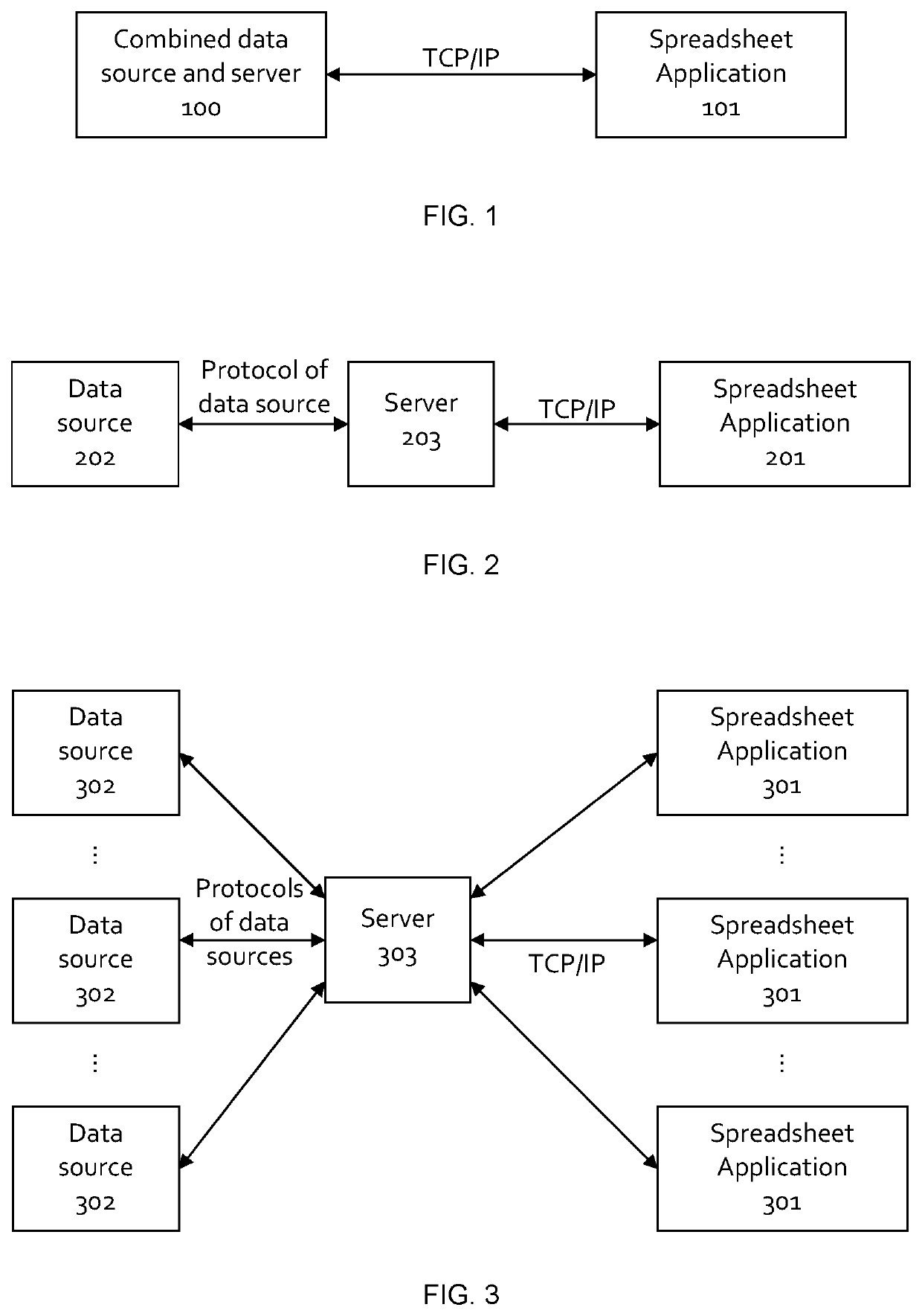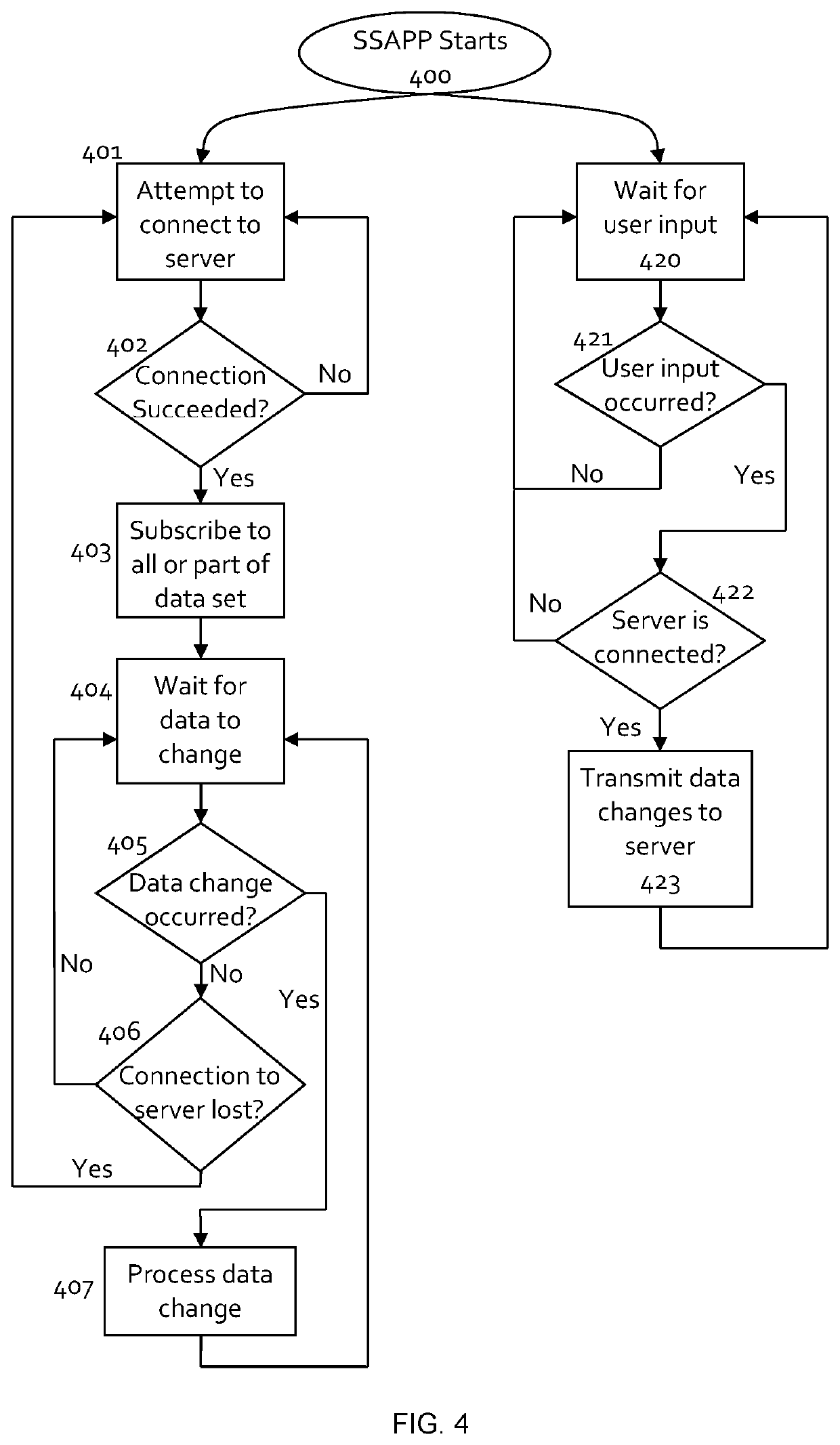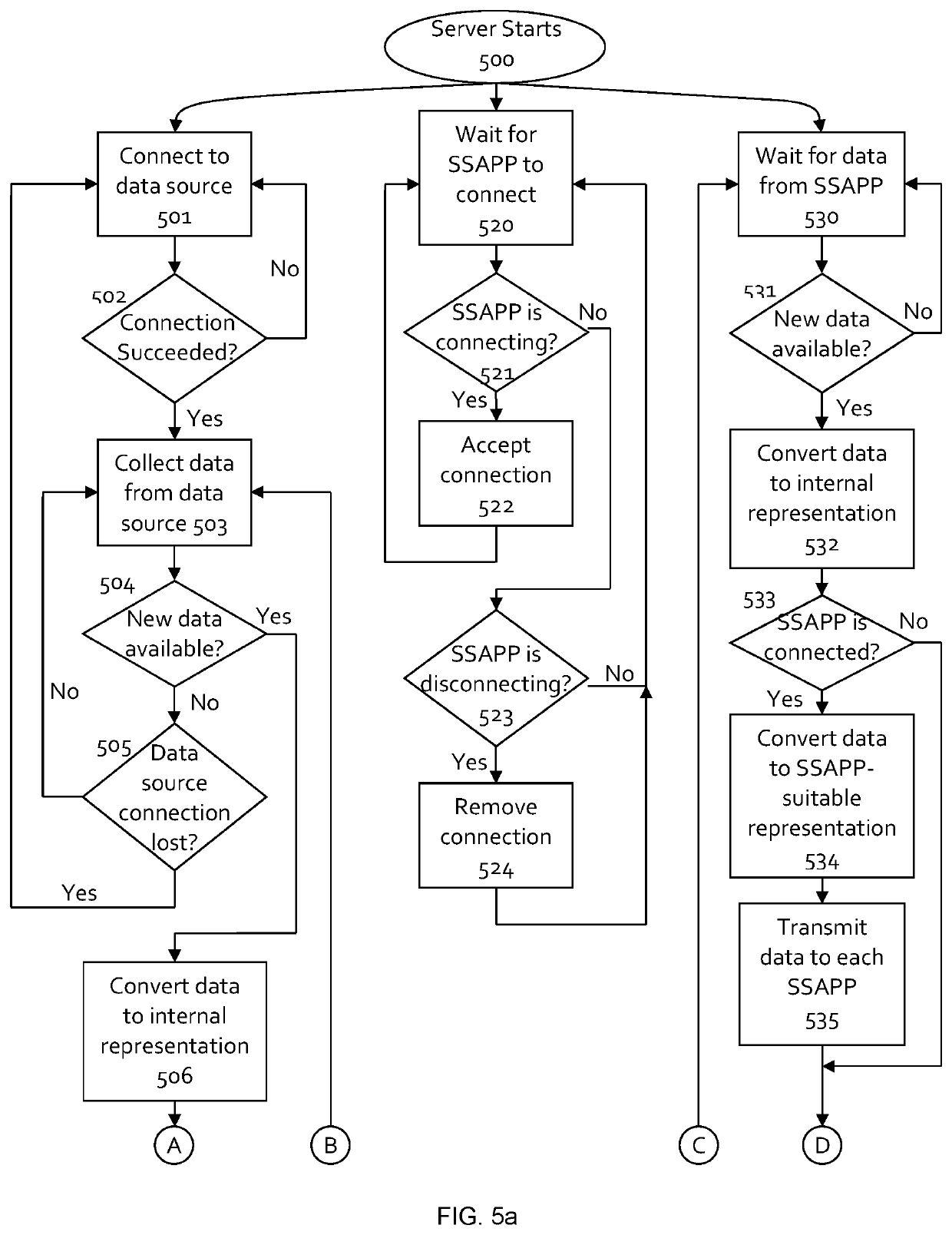Since a large number of data protocols exist, it is impractical for all data sources and data sinks to support all data protocols.
So, for example, there is no way to directly connect a
web browser that supports the HTTP protocol to a spreadsheet application that supports the DDE protocol.
By contrast, applications based on
web browser technology have proven unsuitable in terms of data
connectivity and graphical speed.
Methodologies such as
AJAX that are based on this model are expected to make relatively few transactions and tend to scale to higher speeds very poorly.
The computational and networking costs of establishing and closing connections for each transaction act as a limit to the speed of such systems.
Some developer efforts have provided access to
data driven displays using ActiveX components in a web browser, but these components are generally poorly supported by modern browsers and subject to limitations due to the security risks that they represent.
This
polling mechanism is highly inefficient, and suitable only for relatively
small data sets or for relatively slow-moving data.
Lowering the
polling rate to conserve CPU or network bandwidth has the effect of raising
data latency, which is unacceptable for real-time applications.
This method has several drawbacks, including the fact that the web browser's memory and CPU usage can grow continuously over time due to the ever-larger page that is being transmitted.
However, it does nothing to speed up the communication from the
client to the server.
Both
AJAX and streaming
AJAX methods suffer from a lack of quality display options within the web browser.
Web browsers are generally designed for the display of static pages and web “forms”, and do not offer high-speed or high quality graphic presentation options.
Efforts to improve upon
graphical display options have tended to be incompatible among web browsers, and generally very slow to execute.
Consequently, solutions such as Streaming AJAX are very slow to transmit data back to the data server, because of the large overheads and latencies incurred by having to emit a new HTTP request for every
data transmission.
That is, such a display of interpolated data can be entirely misleading to the viewer.
This kind of interpolation obscures the true behaviour of the underlying data, and is usually unacceptable in real-time applications such as
process control and stock-market trading.
This solves the speed issue, but introduces other issues:A separate communication socket requires a separate TCP port to be open on the server.
This introduces a further opening in the corporate firewall, further limiting the usefulness of the technique.An RIA framework operating within a browser (e.g., Silverlight) may not implement its own SSL layer, relying instead on the browser's HTTPS implementation for
encryption.
In such a case, a dedicated socket implemented by an RIA will not be secure.Dedicated sockets will not pass through web proxies.
This need has driven the RIA implementers to offer such sockets, but with the limitations described above.
Thus it is now possible to access
SCADA systems and data from
the Internet, although there are fundamental questions about security that are limiting the broad adoption of such capabilities.
The
client cannot determine which data items exist, and may only affect the values and / or properties of the data items defined within the server.
In the case of an Internet-based or cloud-based
system, this means that the
SCADA server must be reachable from
the Internet, posing an unacceptable security risk.
SCADA and other manufacturing and control systems often support high-value production lines, where any interference or foul play could cost thousands or millions of dollars.
Although recently some shop floors have begun to make their process data available to the rest of the company on corporate LANs, there is strong resistance to opening ports in
plant firewalls to allow incoming connections from
the Internet.
And this is a security risk that few
plant engineers are willing to take.
Unless these are removed, the
plant is exposed to
attack.
Compounding the problem is that the architecture of most installed
industrial systems was not developed with the Internet in mind.
However, these communication mechanisms have limitation, where, for example, DDE is a simple
data exchange protocols based on Windows messages.
In the context of data from SCADA and / or networked real-time systems, this architecture suffers from a number of limitations, both by design and, in particular, by implementation in Excel, for example:1. DDE is not a networked protocol.
This limits the data's usefulness when interacting with
time sensitive data, with data whose type is not known a-priori and data where
quality information is important.3. DDE bindings in Excel consume the formula of the
cell(s) into which the DDE data is bound.
In addition, it makes it impossible to bind the same
cell both to receive data and to transmit it.
This may not be important when communicating with applications on the same computer, but it would generate unacceptable network
bandwidth utilization if DDE were extended to a network.6. DDE values are transmitted by subscription, meaning that for Excel to emit data to another application that application must have subscribed to a
cell or cells in Excel.
Although Excel provides a means via scripting to “push” data via DDE to an application, this is challenging for a user to configure and produces “blocking” behaviour in Excel, which is highly undesirable.7. There is no mechanism in Excel's implementation of DDE to reconnect to an application if the connection is lost.
This produces a
system that is not robust.
The start-up order of Excel and the other application is crucial, resulting in a fragile
system.8. There is no mechanism in Excel to re-try a subscription for a DDE binding that did not exist at the time that the binding was originally attempted.
DDE can present an
attack vector for
malware, so there are risks associated with leaving DDE features enabled.
Disabling DDE features can mitigate the risk, but doing so can break functionality and prevent data from updating.
Although RTD provides some advantages over DDE, it still suffers from several limitations, particularly as it is implemented in Excel, for example:1. DCOM networking is difficult to configure.
This commonly results in insecure
network configuration in an effort to make the connection succeed.2. DCOM networking does not support network proxies.3. DCOM networking is a blocking protocol.
If the application to which Excel is connected is slow to respond, Excel will freeze waiting for a response.
This may be practical for communication within the same computer or on a LAN, but it is impractical on limited bandwidth connections or on connections where bandwidth usage carries a significant cost.7. RTD bindings in Excel consume the formula of the cell(s) into which the RTD data is bound.
In addition, it makes it impossible to bind the same cell both to receive data and to transmit it.
An RTD
client cannot determine which data tags are available in the RTD server.
This type of application fails in the same ways as an AJAX application—they demand trade-offs between latency, volume and server resources.
Such a system is inappropriate for high-volume low-latency applications like control systems and
financial trading and analysis.
These applications are further limited by a dependence upon the cloud service for their operation.
Although these applications include web-based interfaces and
cloud storage, they rely on
polling technology that is inappropriate for high-volume low-latency applications.
In addition, these applications require a user to export the document to another format in order to see the data in a different SSAPP, such as Excel, thereby breaking the real-time linkage to the exported spreadsheet.
 Login to View More
Login to View More  Login to View More
Login to View More 


